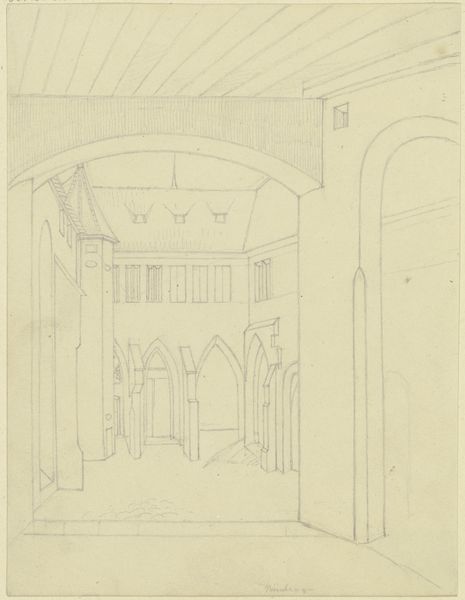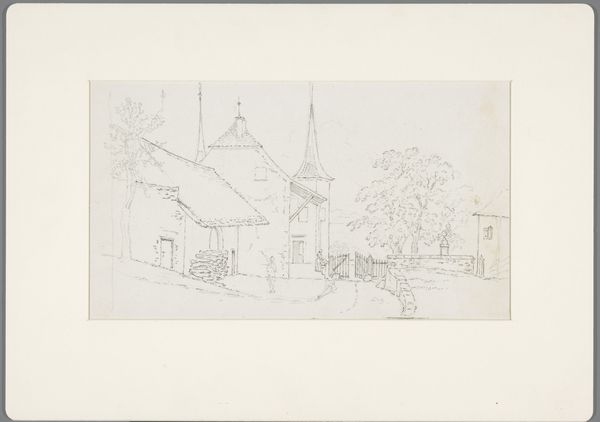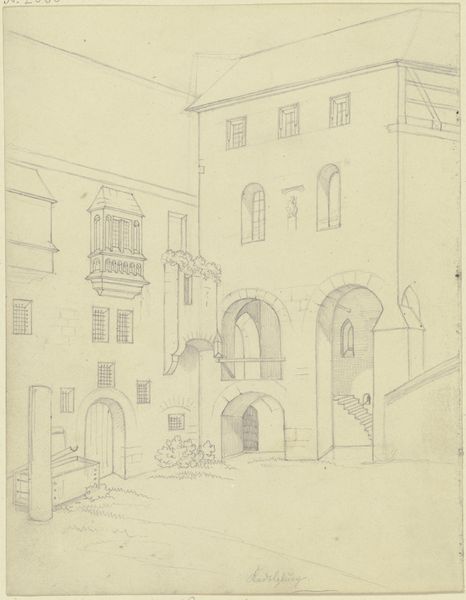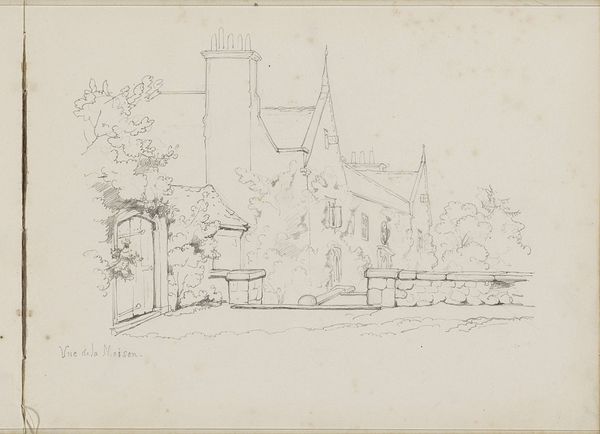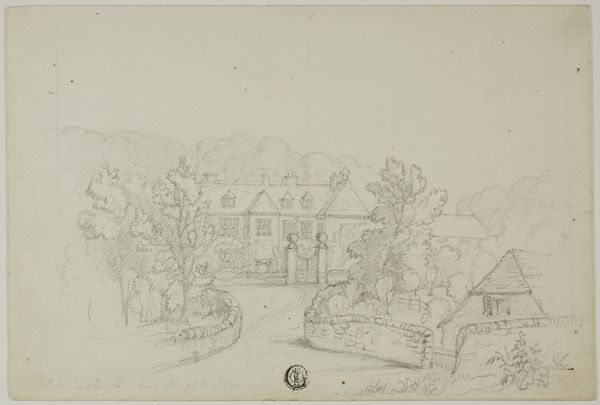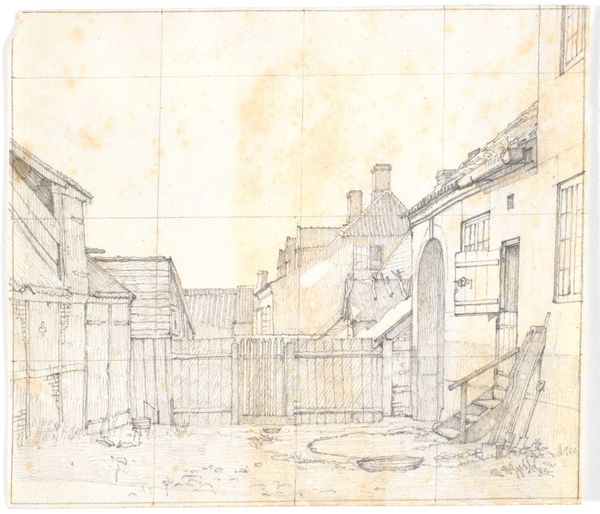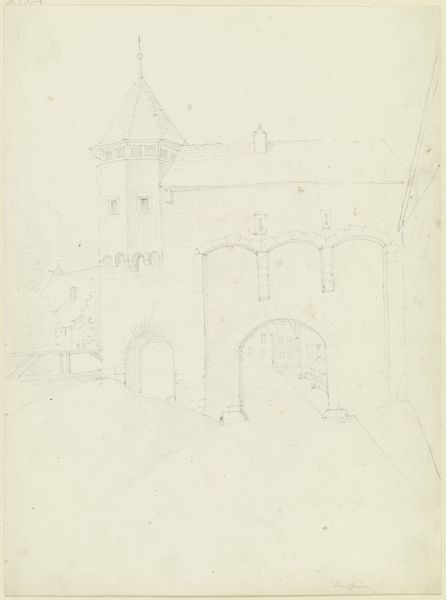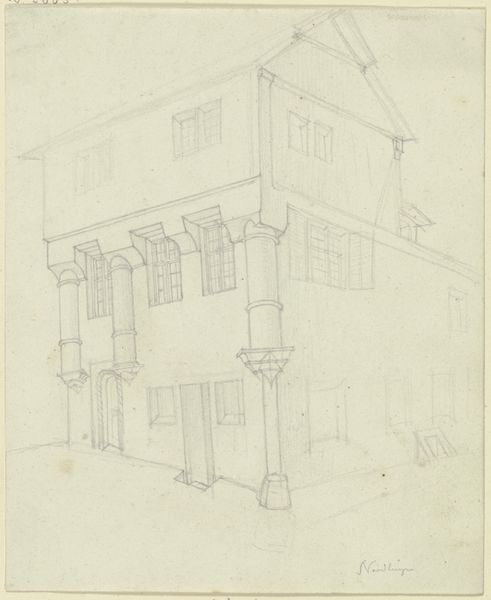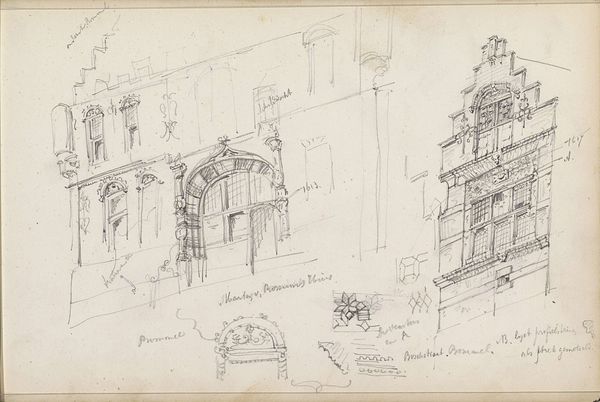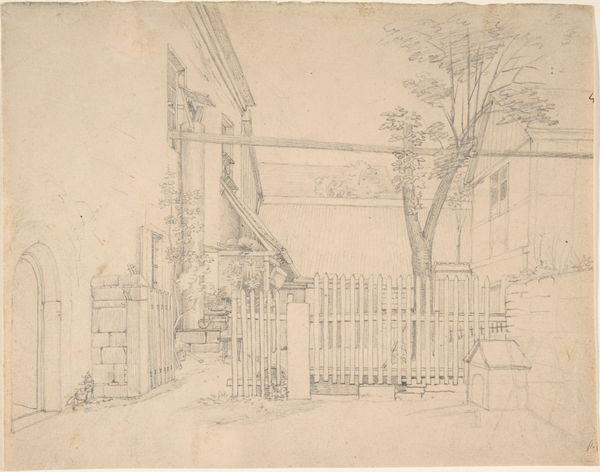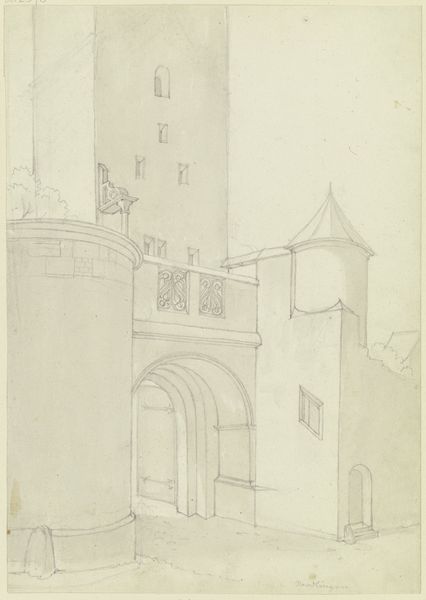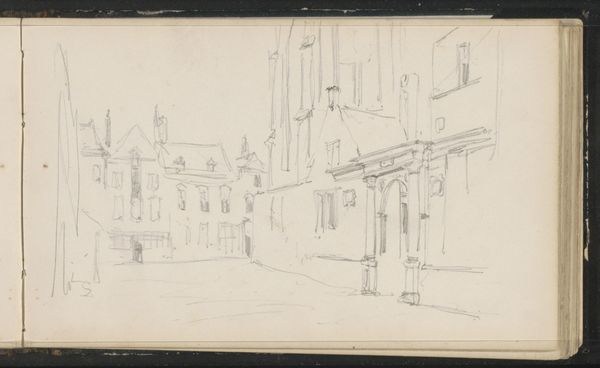
drawing, pencil, architecture
#
drawing
#
neoclacissism
#
landscape
#
pencil
#
cityscape
#
architecture
Dimensions: 6 1/16 x 7 3/4 in. (15.4 x 19.69 cm) (sheet)
Copyright: Public Domain
Editor: This drawing, "View of a Courtyard" by Karl Ludwig Wilhelm von Zanth, dates back to around 1830. It's a pencil drawing, quite detailed actually. What strikes me most is its incredible lightness, almost ethereal quality, achieved through the delicate linework and subtle gradations in tone. What do you see in this piece? Curator: Primarily, I observe the dominance of line. Zanth uses it not merely to delineate form but to construct an intricate spatial framework. Consider how the converging lines of the courtyard direct the viewer's eye deep into the composition. Do you notice the geometric clarity with which the architectural elements are rendered? Editor: Yes, I see the precision in the architectural drawing. But it still feels... airy, not as rigid as I would expect from neoclassical art. Curator: Indeed. The artist subtly deviates from pure neoclassical rigidity by introducing softer, organic elements. Note the trees, how they offer a contrast to the hard lines of the buildings. Also consider how the perspective functions; while rationally constructed, it serves an aesthetic, rather than a purely representational goal. Editor: That's a really good point, I hadn't thought of the perspective as being expressive in itself! It’s like the precision serves a greater artistic vision, not just a literal depiction. Curator: Precisely. And by emphasizing formal structure, Zanth transforms an ordinary courtyard into an object of contemplation, prompting viewers to analyze space, line, and form, leading to an enhanced aesthetic experience. Editor: I definitely see that now. I came in thinking about the atmospheric perspective, but the way the lines and shapes all interact is what really makes the piece. Curator: Well put. Studying how artists organize these components—space, line, and form—is fundamental to art historical inquiry and interpretation.
Comments
No comments
Be the first to comment and join the conversation on the ultimate creative platform.

